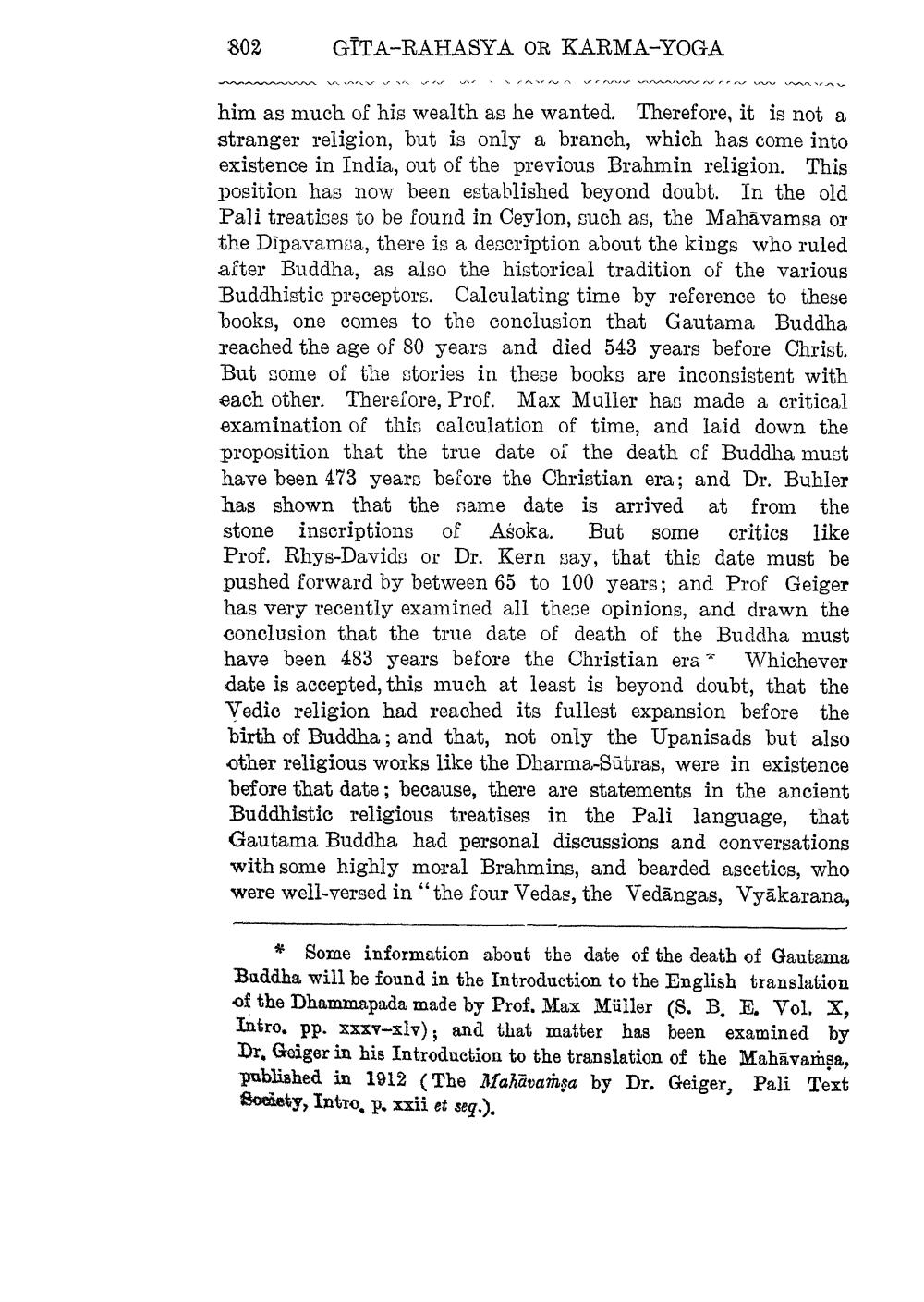________________
802
GĪTA-RAHASYA OR KARMA-YOGA
him as much of his wealth as he wanted. Therefore, it is not a stranger religion, but is only a branch, which has come into existence in India, out of the previous Brahmin religion. This position has now been established beyond doubt. In the old Pali treatises to be found in Ceylon, such as, the Mahāvamsa or the Dipavamsa, there is a description about the kings who ruled after Buddha, as also the historical tradition of the various Buddhistic preceptors. Calculating time by reference to these books, one comes to the conclusion that Gautama Buddha reached the age of 80 years and died 543 years before Christ. But some of the stories in these books are inconsistent with each other. Therefore, Prof. Max Muller has made a critical examination of this calculation of time, and laid down the proposition that the true date of the death of Buddha must have been 473 years before the Christian era; and Dr. Buhler has shown that the same date is arrived at from the stone inscriptions of Asoka. But some critics like Prof. Rhys-Davidsor Dr. Kern say, that this date must be pushed forward by between 65 to 100 years; and Prof Geiger has very recently examined all these opinions, and drawn the conclusion that the true date of death of the Buddha must have been 483 years before the Christian era * Whichever date is accepted, this much at least is beyond doubt, that the Vedic religion had reached its fullest expansion before the birth of Buddha; and that, not only the Upanisads but also other religious works like the Dharma-Sūtras, were in existence before that date; because, there are statements in the ancient Buddhistic religious treatises in the Pali language, that Gautama Buddha had personal discussions and conversations with some highly moral Brahmins, and bearded ascetics, who were well-versed in "the four Vedas, the Vedāngas, Vyäkarana,
* Some information about the date of the death of Gautama Buddha will be found in the Introduction to the English translation of the Dhammapada made by Prof. Max Müller (S. B. E. Vol. X, Intro. pp. XXXY-xlv); and that matter has been examined by Dr. Geiger in his Introduction to the translation of the Mahāvamsa, published in 1912 (The Mahavamsa by Dr. Geiger, Pali Text Society, Intro, P. xxii et seq.).




